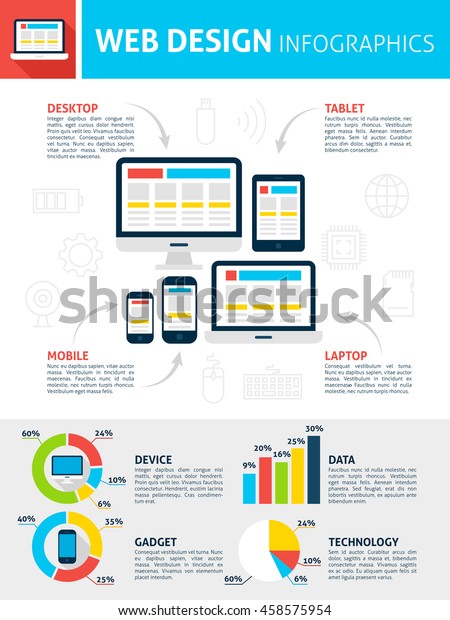Interested In Learning How Site Layout Has Developed Over The Years? Check Out The Journey From Uncomplicated Styles To User-Centered Approaches
Interested In Learning How Site Layout Has Developed Over The Years? Check Out The Journey From Uncomplicated Styles To User-Centered Approaches
Blog Article
Write-Up By-Thorsen Peters
In the past, websites were basic and focused on information. Navigation was direct, and style was for desktop computers. Now, individual experience is vital. Information overviews styles for very easy navigation. Receptive formats suit different gadgets. Today, dark setting reduces pressure, and minimal food selections boost navigating. Interactive features engage customers, and bold visuals stand out. AI combination boosts involvement. See just how layout has actually progressed to enhance your online trip.
Early Days of Web Design
In the early days of website design, simpleness reigned supreme. Websites were basic, with restricted shades, typefaces, and formats. The emphasis was on offering details rather than fancy visuals. Individuals accessed the internet via slow-moving dial-up links, so speed and capability were vital.
Navigation menus were straightforward, generally situated at the top or side of the page. Websites were made for desktop, as mobile surfing wasn't yet widespread. Web content was king, and developers focused on easy readability over complicated layout aspects.
HTML was the main coding language utilized, and developers had to work within its restrictions. Computer animations and interactive attributes were minimal compared to today's criteria. Web sites were fixed, with little dynamic web content or individualized user experiences.
Increase of User-Focused Style
With the evolution of site layout, a shift in the direction of user-focused layout principles has become progressively famous. Today, developing web sites that prioritize user experience is crucial for engaging visitors and attaining company objectives. User-focused style entails recognizing the demands, preferences, and habits of your target audience to tailor the internet site's layout, material, and includes as necessary.
Developers now carry out thorough research, such as customer surveys and functionality screening, to collect insights and comments directly from users. https://www.google.com/maps/place/Moon+and+Owl+Marketing/@32.9757271,-106.5344695,1840583m/data=!3m1!1e3!4m6!3m5!1s0x864ddeaa4179705b:0x488d41d2cc6b9750!8m2!3d32.9757271!4d-97.5696258!16s%2Fg%2F11b6mpccrg?entry=ttu&g_ep=EgoyMDI1MDIxMS4wIKXMDSoJLDEwMjExNDUzSAFQAw%3D%3D -driven technique assists in producing user-friendly navigating, clear calls-to-action, and aesthetically appealing interfaces that reverberate with visitors. By Suggested Site at the center of the layout process, internet sites can supply a more customized and pleasurable experience.
Responsive layout has actually likewise emerged as a vital facet of user-focused style, guaranteeing that internet sites are enhanced for various devices and screen sizes. This versatility enhances availability and use, accommodating the diverse means users communicate with web sites today. In essence, the surge of user-focused layout signifies a change in the direction of developing digital experiences that focus on the demands and assumptions of the end individual.
Modern Trends in Website Design
Check out the most up to date patterns forming web design today. One noticeable fad is dark setting style, supplying a sleek and modern look while decreasing eye pressure in low-light environments. One more essential fad is minimalist navigation, streamlining food selections and boosting user experience by concentrating on essential elements. Incorporating micro-interactions, such as computer animated switches or scrolling impacts, can produce an extra interesting and interactive website. Responsive design stays critical, making certain seamless customer experiences across numerous gadgets. Additionally, making use of strong typography and asymmetrical formats can add visual passion and draw attention to specific material.
Integrating AI modern technology, like chatbots for customer assistance or personalized suggestions, boosts customer engagement and simplifies processes. Access has likewise come to be a significant fad, with designers focusing on inclusive layout practices to cater to varied individual demands. Embracing sustainability by enhancing site efficiency for rate and performance is another arising fad in web design. Working together with individual feedback and data analytics to repeat and boost design continuously is vital for remaining relevant in the ever-evolving electronic landscape. By welcoming these modern patterns, you can produce an aesthetically attractive, straightforward website that resonates with your audience.
Conclusion
As you assess the development of website layout from the early days to now, you can see how user-focused style has become the driving force behind contemporary fads.
Embrace the journey of change and adaptation in web design, constantly keeping the individual experience at the leading edge.
Stay present with the most up to date patterns and modern technologies, and never ever quit evolving your strategy to develop aesthetically spectacular and straightforward sites.
Develop, adapt, and develop - the future of web design is in your hands.
